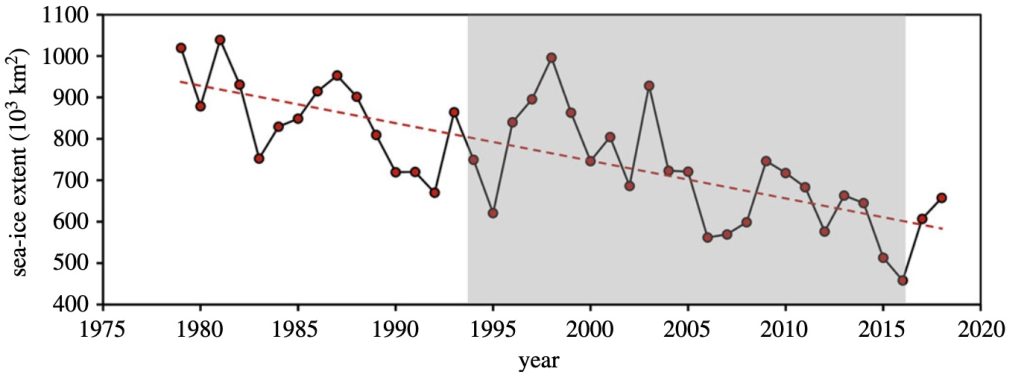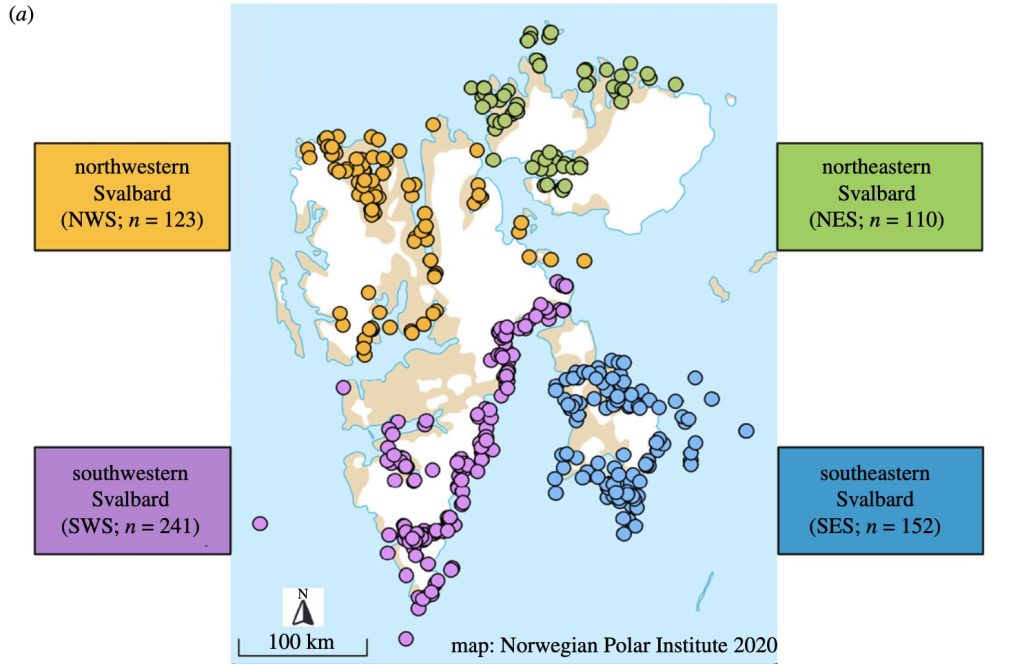The iconic polar bear (scientific name: Ursus maritimus) has become a symbol of the threats to the ecology and life history of plants and animals from climate change. Shifts in their distributions in recent years are likely caused by the altered Arctic environment. It has, for example, been reported that polar bears are increasingly summering in nearshore terrestrial and barrier island habitats in the central Beaufort Sea, possibly due to the loss of nearshore ice during summer. However, it might be challenging to tell apart occasional observations from significant biological trends driven by climate change.

The Natural History Museum Oslo has an extensive history of research on polar bears, with a focus first of all on polar bears in the Svalbard archipelago. In 2021, FEZ scientists Øystein Wiig and Lutz Bachmann contributed to a study coordinated by scientists at the Norwegian Institute of Bioeconomy Research (NIBIO) Svanhovd. The results of the study were published in an article entitled ‘Sea ice reduction drives genetic differentiation among Barents Sea polar bears‘ in the prestigious journal Proceedings of the Royal Society B – Biological Sciences. The study was published open access, and is, thus, available to everybody.

When analyzing genetic data from 626 polar bears from four sampling areas within the archipelago we found a 3–10% loss of genetic diversity across the study period, accompanied by a near 200% increase in genetic differentiation across the four sampling regions. The team agreed that the results are best explained by a decrease in gene flow, i.e. the transfer of genetic material from one population to another caused by habitat fragmentation owing to the loss of sea ice coverage. A consequence is that polar bears from different populations will have less opportunities for mixing, and, thus, increased inbreeding of local polar bears will occur.
This study illustrates the need and importance of genetic monitoring for developing adaptive management strategies for polar bears and other ice-dependent specie
You can find the article Maduna SN et al. 2021 Sea ice reduction drives genetic differentiation among Barents Sea polar bears. Proc. R. Soc. B 288: 20211741 at https://doi.org/10.1098/rspb.2021.1741. It has been published open-access and can be read by everyone.
![]()
